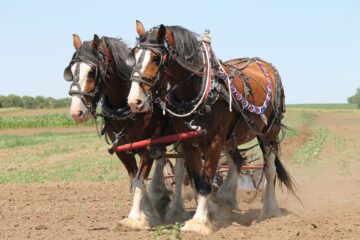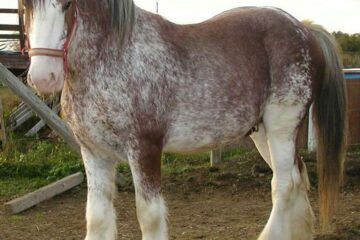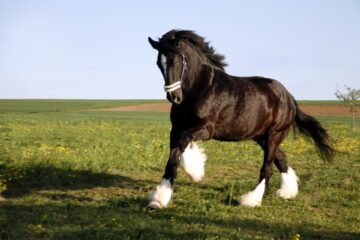
Shetland pony History and Origin
Ancient Bonds:
Ancient civilizations fostered deep bonds between humans and Shetland ponies, with their history and origin spanning regions like ancient Egypt and medieval European villages. These ponies were cherished for their roles in agriculture, transportation, and companionship. In these early times, Shetland ponies were a practical necessity, as they ensured their protection from the elements and fostered a symbiotic relationship between people and these remarkable creatures.
Medieval Evolution:
The medieval period in Europe marked a pivotal phase in the sheltering of ponies. As essential workhorses on farms and in transportation, ponies were provided with basic stables and Shetlands to shield them from the unpredictable weather. These rudimentary structures not only safeguarded the animals but also underscored their significance in sustaining the livelihoods of many. This era laid the foundation for the evolution of sheltering practices as societies progressed.
Modern Welfare and Compassion:
Today, the history of Shetland ponies has culminated in a deep commitment to their welfare and compassion for their well-being. Modern Shetlands and barns are designed with meticulous attention to detail, prioritizing the comfort, health, and safety of these animals. Moreover, rescue and rehabilitation efforts have emerged as a crucial component of sheltering ponies, rescuing them from neglect and abuse. This modern approach reflects a society’s growing awareness of the ethical treatment of animals, reshaping the narrative of Shetland ponies from mere workers to cherished companions and symbols of our evolving compassion for all living beings.

Colors of Shetland pony
Vibrant Diversity: The colors of Shetland ponies exhibit a captivating and diverse palette that reflects the rich genetic diversity within the pony population. Shetland ponies come in a wide array of colors and patterns, adding a touch of vibrancy to these sanctuaries. From the striking coats of chestnut, bay, and black to the less common but equally enchanting shades like buckskin, palomino, and roan, each pony brings its own unique hue to the Shetland. Some may sport eye-catching white markings on their faces, legs, or bodies, adding extra charm to their appearances. This diversity in coat colors not only contributes to the visual appeal of Shetland ponies but also highlights the importance of preserving and appreciating the genetic heritage of these remarkable animals.
Symbolism and Individuality: Beyond their aesthetic appeal, the colors of Shetland ponies often hold symbolic significance and can serve as a reflection of their individual personalities. For instance, a spirited and fiery pony might don a chestnut coat, while a calm and gentle one may have a soothing gray hue. The diverse range of colors and patterns in Shetland ponies emphasizes their individuality and unique traits, making them even more endearing to those who care for and appreciate them. Regardless of their coat color, these ponies symbolize resilience, hope, and the potential for a brighter future, which are central themes in the mission of sheltering and rehabilitating these wonderful animals.
Size of Shetland pony
Shetland ponies vary widely in size, but they typically have a smaller stature compared to full-sized horses. Shetland ponies can range from miniature ponies that stand just a few feet tall to small ponies that may reach heights of around 12 to 14 hands (48 to 56 inches) at the withers. This compact size is one of the defining features of Shetland ponies and is part of what makes them so endearing and suitable for various roles, including as therapy animals, companions for children, or even as working animals in certain contexts. Regardless of their size, Shetland ponies often have big hearts and make a significant impact on the lives of those who care for and interact with them.
Best food for Shetland pony
To maintain the health and well-being of Shetland ponies, the best diet must be chosen. Age, exercise level, and general health are all factors that affect the nutritional requirements of Shetland ponies. High-quality fodder, such as grass hay or good-quality pasture, is a major part of their diet. This supports good digestion and offers vital minerals and fiber. It’s crucial to keep an eye on the forage’s quality to make sure it satisfies nutritional needs and is free of pollutants like mold.
Supplementing their forage with a balanced commercial pony or horse feed can help meet their specific nutritional needs. These feeds are formulated to provide essential vitamins, minerals, and protein that may be lacking in the forage. Shetland ponies should be fed appropriate amounts based on their weight and activity level, and it’s crucial not to overfeed to prevent obesity, which can lead to various health issues. Additionally, providing fresh, clean water at all times is essential to their well-being.
To create a feeding strategy unique to the requirements of the Shetland ponies, taking into consideration elements like age, health issues, and the accessibility of pasture, think about talking with a veterinarian or equine nutritionist. The key to preserving their health and making sure they get the finest nutrition possible is to regularly check their physical state and adapt their diet accordingly.

When Shetland pony Breeds
When it comes to Shetland ponies, their breed diversity is remarkable. Numerous pony breeds end up in rescue and rehab centers. Shetland ponies come in various breeds and sizes, from sturdy Shetlands to charming Welsh ponies, and gentle American Miniatures. Each breed has unique traits, appealing to different adopters.
Some Shetland ponies are purebred, while others are diverse blends, celebrating genetic variety. Shetland ponies share resilience, need for care, and potential as cherished companions or therapy animals. They symbolize second chances and the enduring bond between humans and these remarkable equines.
6 Amazing Facts about Shetland pony
- Diverse Breeds: Shetland ponies come in a wide variety of breeds, from the tiny American Miniature ponies to the hardy Shetlands and the elegant Welsh ponies. This diversity in breeds ensures there’s a Shetland pony for nearly every preference and purpose.
- Therapeutic Companions: Many Shetland ponies find their calling as therapy animals, offering emotional support and healing to individuals facing physical, emotional, or psychological challenges. Their gentle nature and intuitive demeanor make them ideal partners in therapeutic programs.
- Resilience: Shetland ponies often have remarkable stories of resilience, having overcome neglect, abuse, or abandonment. Their ability to bounce back and trust humans again is a testament to their resilience and capacity for forgiveness.
- Educational Ambassadors: Some Shetland ponies become educational ambassadors, helping teach children and adults alike about responsible animal care, empathy, and the importance of animal welfare.
- Lifespan: On average, ponies have a longer lifespan than larger horse breeds. They can live well into their 20s or even 30s with proper care, providing years of companionship and service.
- Versatile Workers: In addition to their roles as therapy animals and companions, Shetland ponies can excel in various activities, including driving, riding, and even agility training. Their adaptability makes them valuable assets in a wide range of equestrian pursuits.
What is the personality of a Shetland pony?
Shetland ponies are known for being lively and independent-minded animals. It’s common to hear people characterize these miniature horses as bright, inquisitive, and characterful. They are renowned for their independence, which may occasionally take the form of intransigence, even though they can be affectionate and devoted to their careers. Shetlands are often friendly and love interacting with people, especially when they get treats or special treatment. Their lively personalities make them highly suitable for various roles, such as family pets and therapy animals. However, to effectively harness their energy and intelligence, continuous training and positive reinforcement are necessary.
What are the characteristics of a pony?
Ponies are distinct from full-sized horses due to their unique characteristics, which include their smaller stature, typically standing under 14.2 hands high (58 inches), strong and sturdy build, thick manes and tails, and a robust, often rounder body shape. They are known for their hardiness, surefootness, and adaptability to various environments and climates. Ponies exhibit a range of temperaments, from gentle and docile to spirit and independent, but they are generally intelligent and have a keen sense of survival. Their longevity is another notable trait, often living longer than larger horse breeds. These combined qualities make ponies well-suited for a wide array of roles, including as children’s mounts, therapy animals, and companions for all ages.
What is the difference between a mini Shetland pony and a Shetland pony?
The primary difference between a mini Shetland pony and a standard Shetland pony lies in their size.
People often intentionally breed Mini Shetland ponies, a smaller subset of Shetland ponies, to be even tinier than the already small standard Shetlands.
Mini Shetland ponies are usually under 34 inches (86 centimeters) tall at the withers. Standard Shetland ponies typically measure between 34 and 46 inches (86 to 117 centimeters) in height.
Aside from their size, mini Shetland ponies share many of the same characteristics as their larger counterparts, including their sturdy build, thick manes and tails, and hardy nature. They are known for their intelligence, friendly personalities, and versatility in various equestrian activities. Both mini Shetland ponies and standard Shetland ponies are popular choices as companion animals, therapy animals, and mounts for young riders due to their manageable size and gentle dispositions.



0 Comments